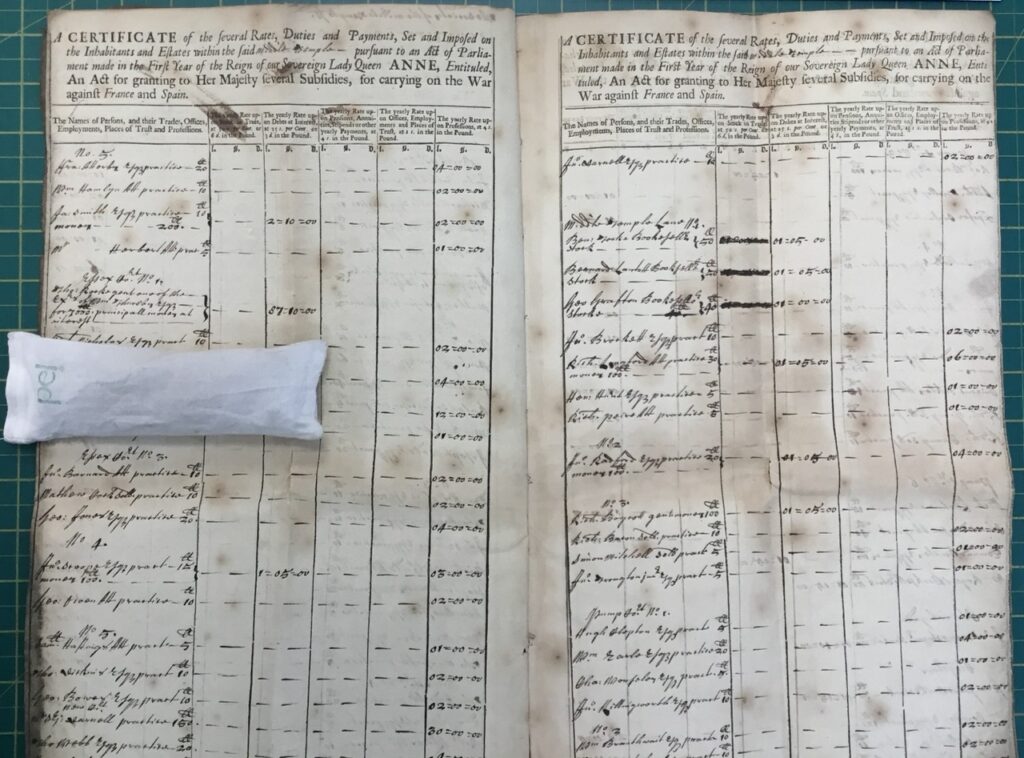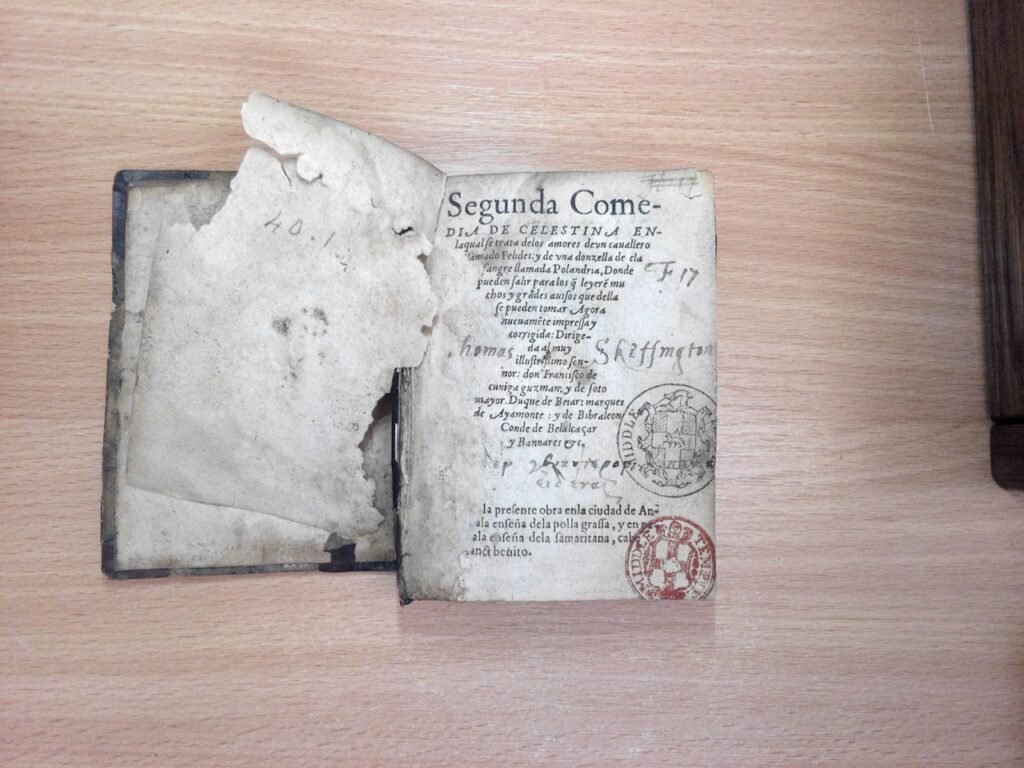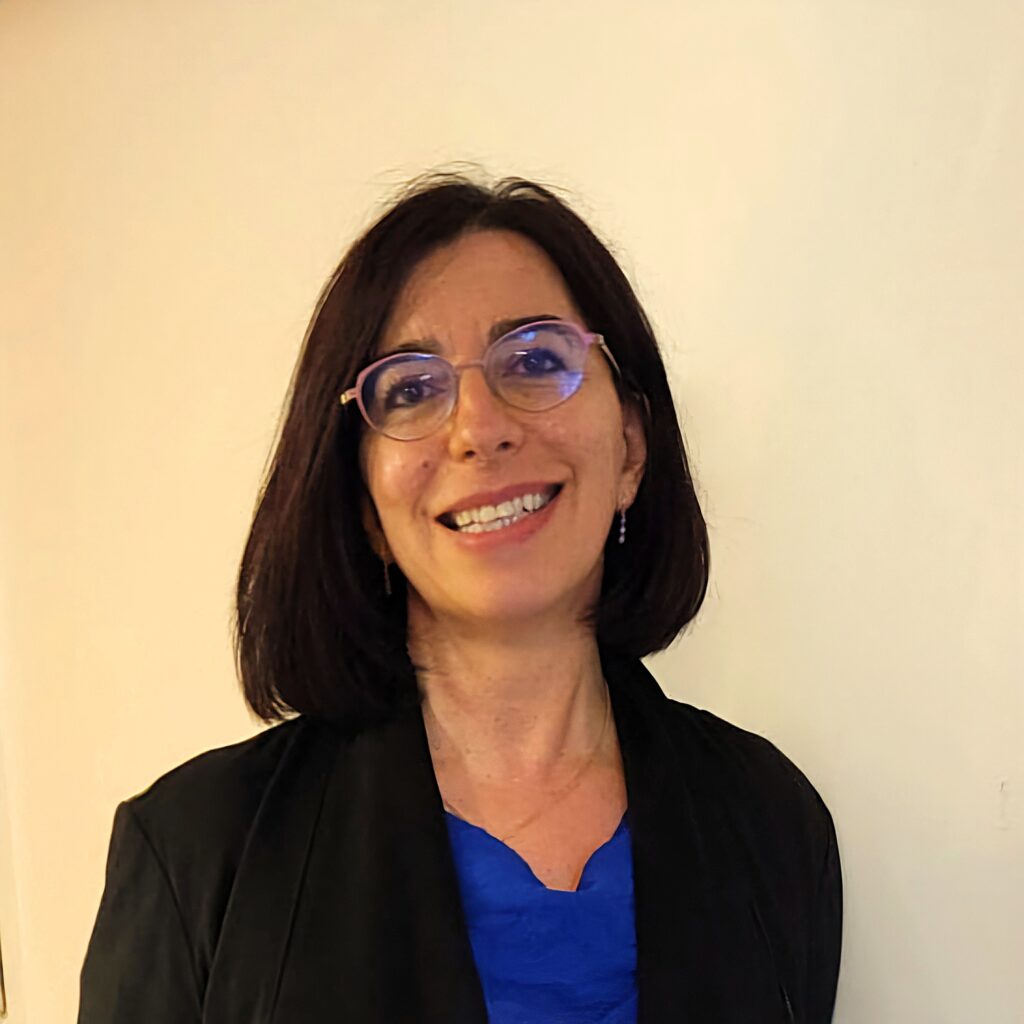Ana Sáez-Hidalgo (Universidad de Valladolid) and Renae Satterley (Middle Temple Library)
From January to April 2025, Middle Temple Library featured an exhibition of rare books, one manuscript, and two items from the Archive, celebrating the Inn’s links to Spain in the 16th and 17th Centuries. The exhibition was divided into six main themes: colonisation and the Americas, etiquette, literature, medicine, religion, and war.
Some highlights included Raimundo González de Montes, Sanctae inquisitionis hispanicae artes aliquot detectae, ac palam traductæ, printed in Heidelberg in 1567. González de Montes is a pseudonym. An exiled Spanish Protestant named Antonio del Corro (1527-1591) was the actual author. From 1571 to 1579, Corro was Latin reader in divinity at the Temple Church. The book, ‘the first systematic denunciation,’ of the Spanish Inquisition contains a description of the Inquisition’s methods (not then publicly available), including their use of torture. It was quickly translated into a variety of languages, including English in 1625: ‘A full, ample and punctuall discouery of the barbarous, bloudy, and inhumane practises of the Spanish Inquisition, against Protestants.’
In the etiquette section, we highlighted Luis Pacheco de Narváez’s ‘Libro de las Grandezas de la Espada’, an early 17th Century manuscript version of this influential work on the Spanish Destreza style of rapier fencing. It begins with an explanation shrouded in Renaissance humanism on the usefulness of the book, and that the reader will develop five virtues of understanding, ingenuity, armoury, prudence, and spirit. The techniques rely on Euclidean geometry, in contrast to the techniques shown in the less precise medieval fencing manuals.’ One of our interns, Nicholas Ricardo, assisted us with the exhibition, choosing items, and writing some of the caption cards such as the one for this item.

Another unique item on display was MT/2/XRR/36, a ‘certificate of money charged for continuing the war against France and Spain,’ dated 1703. The certificate lists the name, profession and address of each chamber occupant at the Inn, and the yearly rate charged on them to assist the War of the Spanish Succession. The ‘Act for granting to Her Majesty several Subsidies for carrying on the War against France and Spain’ was passed in February 1703 (new style) to raise funds for the war. The Middle Temple certificate was compiled on Sunday, 25 March 1703 by the Inn’s assessors, who were the butlers, Thomas Silvester and Jonathan Pennyfather, and approved by Senior Benchers: Edward Northey, John Entwisle, Martin Ryder, Thomas Lake, William Cherrey and Joseph Offley.
Three activities were organised around the exhibition, two online and one on-site, all of them replicating the Anglo-Spanish profile of the exhibition itself. The purpose of the first online activity was to connect with a library in Spain with a comparable Anglo-Spanish character, reflecting the other side of the coin, so to speak. To this end, we organised a virtual tour of one of the few Spanish libraries that still holds its original early modern book collection: the Royal English College of St Alban’s in Valladolid. A seminary founded in 1589 in response to religious persecution by Elizabeth I, St Alban’s was intended to train Catholic exiles from England for the priesthood, providing them with the intellectual and spiritual tools (that is, books) to enable disputation against Protestants. As a result, for centuries, the library of St Alban’s was one of the few collections with a large number of English books that the Inquisition otherwise forbade. This included a wide range of materials, from religious pamphlets to Protestant historiographies like William Camden’s Britannia (circa 1586) and John Speed’s History of Great Britaine (1632); from English translations of classical authors like Ovid (translated by George Sandys, a member of Middle Temple, in 1626) to original English literary works by Shakespeare and Sidney, some of them censored.
The books of the College founder, the Jesuit Robert Persons (1546-1610), are also still extant in the St. Alban’s library. In the early modern period, St Alban’s College and its library were far more than a mere depository of books for English Catholics, as the virtual tour showed. It became a hub for Anglo-Spanish relations, not only facilitating the flow of cultural and artistic traditions and styles between Spain and England, but also as a hub for news about the religious situation in England, contributing to translations, and producing source materials for resistance by English Catholics away from their homeland. One of the most noteworthy examples of this is a book shown both in this virtual tour and in the exhibition at the Middle Temple, Diego de Yepes’ Historia Particular de la Persecucion de Inglaterra (1599). A perfect instance of Anglo-Spanish collaboration, the stories in it were written by Catholics in England and in exile, sent to Spain, where they were translated and compiled into this volume to publicise the difficult circumstances of English Catholics at home and abroad as leverage to obtain support from Spaniards.

The second online activity was designed to be more interactive. It was a workshop on the Library of the Middle Temple and its Anglo-Spanish holdings for the students of the Degree of English Studies of the University of Valladolid. After Dr Renae Satterley introduced the library and its history to the students, they enjoyed a virtual tour of the site, which allowed them to see some of its holdings. For the workshop, they were asked to explore the books and various topics of exhibition and to imagine the kind of person who would be interested in having such books in England, and what this person would learn about Spain from these books. The response of the students was very positive: not only were they fascinated to discover the Middle Temple and its library, but they were also highly engaged with the exhibition. Many of them expressed surprise at the fact that a 17th Century Englishman would acquire so many and so varied Spanish books, and that the Anglo-Spanish book exchange would be so rich at the time. Others commented that it is ‘nice when it comes to see how the two countries interacted.’
The third activity had two parts. First, there was an event built around books that took place in the library of the Middle Temple. On the occasion of the World Book Day, Wednesday 23 April, Professor Alexander Samson (UCL), Professor Sáez-Hidalgo, and Dr Satterley guided visitors through the exhibition, accompanying them and commenting on the books and documents in it, and giving insights into the value of the Anglo-Spanish cultural heritage held in the collection of the Middle Temple. This was followed by an event at the Instituto Cervantes, where the World Book Day was celebrated with a well-known tradition of Catalan origin: the giving of books and roses, an expression of love, and love for reading.
The exhibition and accompanying events demonstrate the importance of the Middle Temple Library’s rich, rare book collection and the value of working collaboratively with research audiences outside of the Inn. The exhibition also highlighted that three of the books featured are in dire need of restoration, the cost of which can be sponsored by interested members. Lucas Gracián Dantisco’s handbook of manners, Galateo Español (Valladolid, 1603) is a small book measuring 14cm which would cost £400 to repair. Diego de Yepes’ Historia Particular de la Persecucion de Inglaterra, y de los martirios mas insignes que en ella a avido (Madrid, 1599) is in dire need of repair, and would cost £800 to do so. Feliciano de Silva’s Segunda Comedia de Celestina (Antwerp and Paris, 1550?) has been damaged by water in the past, resulting in the pages sticking together. Silva (1491-1554) was one of many writers of chivalric romance of the Golden Age of Spanish literature, who Cervantes nonetheless mocked in Don Quixote. Due to the extensive damage, it would cost £900 to repair, despite only measuring 11cm in height! Book sponsors receive before and after photos of the book, and a bookplate is placed in it commemorating their donation.
While the in-house exhibition has now finished, the online version will be available in perpetuity at: https://www.juncture-digital.org/middletemplelibrary/spanish-connections.

Renae Satterley is Head of the Library at Middle Temple. She is coming up to her 20th anniversary at the Inn. Prior to that she worked at Emmanuel College Cambridge, and at various library roles at Concordia and McGill, in Montreal. She completed her PhD at Queen Mary, University of London in 2024. Her thesis focused on the collection of the Library’s founder, Robert Ashley, and his translations.

Ana Sáez‐Hidalgo is professor of English at the Universidad de Valladolid, Spain. Her research focuses on premodern Anglo-Spanish cultural and literary relations. She has published on how the circulation of people, books, objects, knowledge and ideas was central to the cross-cultural connections between Spain and England.

